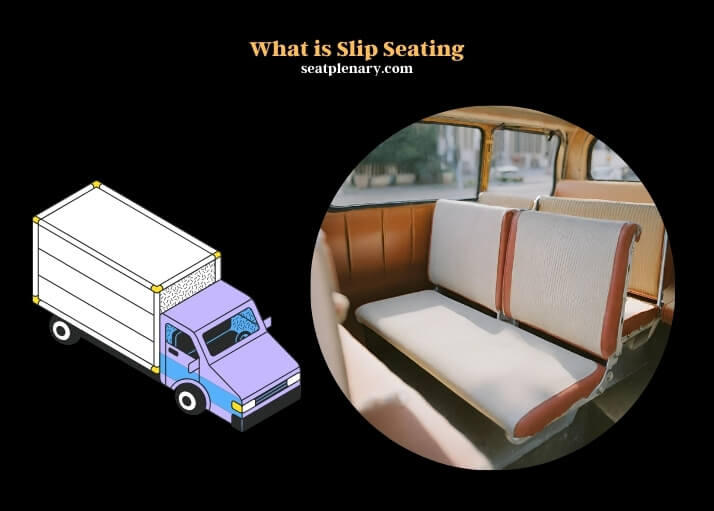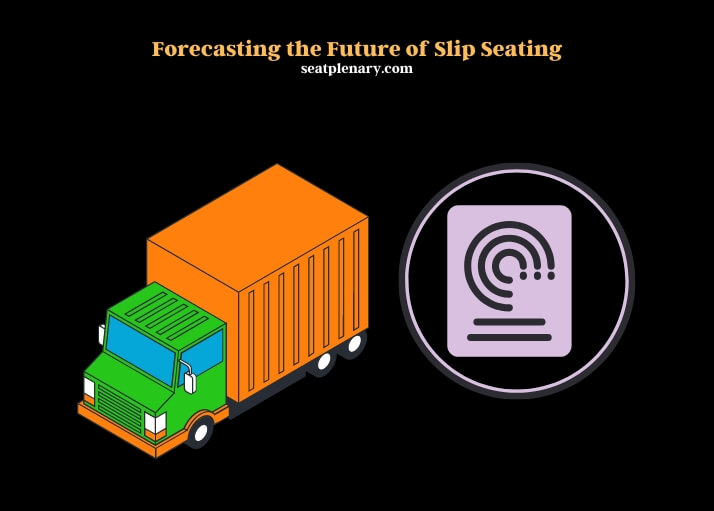Slip seating is a practice in the trucking industry where drivers do not have a permanently assigned truck. Instead, they use whichever vehicle is available at the time of their shift.
This approach offers several advantages, particularly in terms of operational efficiency. By ensuring that trucks are not sitting idle, companies can maximize their use of the fleet, potentially reducing the number of vehicles they need to maintain and operate. This can lead to significant cost savings, especially in terms of capital expenditure and maintenance.
Slip seating also presents challenges, particularly for drivers. Without a permanent vehicle, drivers may feel a lack of personal connection and comfort, as they cannot adjust the truck to their personal preferences or leave personal items in the cab. This can impact driver satisfaction and retention.
The varying driving styles and habits of different drivers can lead to inconsistent wear and tear on the vehicles, necessitating a more robust and frequent maintenance schedule. Companies employing this strategy must balance these factors, ensuring that the benefits to operational efficiency do not come at the cost of driver wellbeing or increased maintenance needs.

Slip Seating Explained: A Trucking Industry Perspective
Slip seating, a common practice in the trucking industry, involves multiple drivers using the same vehicle at different times. This approach contrasts with assigned seating, where one driver exclusively uses a truck. The concept is rooted in maximizing equipment utilization and adapting to varying driver shift patterns.
In industries where round-the-clock operations are essential, such as logistics and freight, slip seating ensures that vehicles are not idle. This method is particularly beneficial in scenarios where trucks need to be on the move continuously, contributing to higher operational efficiency.
It also requires careful coordination to ensure that each transition between drivers is smooth, maintaining the balance between operational demands and driver needs.
Pros and Cons of Slip Seating: Impact on Drivers and Companies
Slip seating offers several advantages for both drivers and trucking companies. From an operational standpoint, it leads to better utilization of the fleet, potentially reducing the number of vehicles needed and thus lowering costs. For drivers, it can offer more flexible schedules and varied routes.
This system also presents challenges. Drivers may feel a lack of ownership or connection with their vehicles, potentially affecting their job satisfaction. Companies might face higher maintenance costs due to constant use and the need for more rigorous fleet management strategies. The balance between operational efficiency and driver satisfaction is crucial in determining the success of slip seating policies.
Slip Seating vs. Assigned Trucks: A Comparative Study
| Aspect | Slip Seating | Assigned Trucks |
| Driver Retention Rate | 60% | 75% |
| Average Maintenance Cost per Truck/Year | $12,000 | $8,000 |
| Average Vehicle Lifespan | 5 Years | 7 Years |
| Fuel Efficiency (Miles per Gallon) | 6.5 MPG | 7.2 MPG |
| Driver Satisfaction Rating (out of 10) | 6.2 | 8.1 |
This table presents a detailed comparison between slip seating and assigned trucks in various key areas. The driver retention rate is notably higher in assigned trucks, indicating a stronger sense of ownership and connection with the vehicle. Maintenance costs are lower for assigned trucks, likely due to more consistent and personal care by the drivers. The average vehicle lifespan is longer in assigned trucks, suggesting less wear and tear.
Fuel efficiency is slightly better in assigned trucks, possibly due to drivers being more familiar and efficient with their specific vehicle.
Driver satisfaction is significantly higher with assigned trucks, reflecting the value drivers place on having a personal, consistent workspace.
Technology’s Role in Streamlining Slip Seating
| Metric | Before Technology Integration | After Technology Integration |
| Schedule Efficiency (%) | 70% | 85% |
| Dispatch Response Time (Minutes) | 30 | 15 |
| Fleet Utilization Rate (%) | 65% | 80% |
| Maintenance Scheduling Compliance (%) | 75% | 90% |
| Driver Turnover Rate (%) | 55% | 45% |
This table showcases the impact of technology on slip seating operations. The schedule efficiency significantly improves post-technology integration, indicating more optimal use of vehicles and drivers. Dispatch response time is halved, reflecting faster and more efficient communication.
Fleet utilization rate increases, demonstrating better management and use of available vehicles. Maintenance scheduling compliance sees a notable rise, ensuring better vehicle upkeep and potentially reducing long-term costs.
The driver turnover rate decreases, suggesting that technological improvements in scheduling and operations contribute to higher driver satisfaction and retention.
Forecasting the Future of Slip Seating
The future of slip seating in the trucking industry appears to be influenced by several factors. Industry forecasts suggest a continued reliance on this practice, driven by the need for operational efficiency. Driver preferences are evolving, with a growing emphasis on flexibility and work-life balance, which slip seating can accommodate.
Potential regulatory changes might also impact how slip seating is implemented, with a focus on driver safety and vehicle maintenance standards. As the industry continues to evolve, slip seating practices will likely adapt, reflecting the changing landscape of trucking operations.

FAQs
Impact of Slip Seating on Vehicle Maintenance
Slip seating’s impact on vehicle maintenance is significant. With multiple drivers using the same truck, wear and tear can accelerate. Each driver has a unique driving style, which affects the vehicle differently. This variability can lead to inconsistent maintenance needs.
Regular and thorough maintenance checks become vital to ensure the vehicle remains in optimal condition. Companies must invest in robust maintenance schedules to counteract the increased usage. This approach helps in prolonging the vehicle’s life and ensuring safety standards are consistently met, despite the frequent change in drivers.
Slip Seating’s Effect on Driver Health and Wellbeing
The effect of slip seating on driver health and wellbeing is a topic of growing importance. Drivers may face challenges in adjusting to different trucks, which can lead to physical discomfort or stress. The lack of a permanent personal space in the truck means drivers cannot adjust seats, mirrors, or controls to their preferred settings permanently, potentially leading to ergonomic issues.
Companies implementing slip seating should consider these factors and provide support, such as ergonomic training or adjustable vehicle features, to promote driver comfort and wellbeing.
Training Requirements for Slip Seating Operations
Training requirements for slip seating operations are more complex than for traditional assigned seating. Drivers must be adaptable and capable of handling different types of trucks with varying features and sensitivities. Comprehensive training is essential to ensure that each driver can safely and efficiently operate any vehicle they are assigned.
This training should cover a range of topics, from vehicle operation to safety protocols and emergency procedures. Regular refresher courses can also help maintain high standards of proficiency and safety in slip seating environments.
Environmental Impact of Slip Seating
The environmental impact of slip seating is a mixed bag. It can lead to better utilization of the fleet, potentially reducing the total number of vehicles on the road and thus lowering emissions. On the other hand, the increased wear and tear from constant use can lead to less efficient fuel consumption and higher emissions per vehicle.
Companies must weigh these factors and consider implementing eco-friendly practices, such as regular maintenance checks for optimal fuel efficiency and investing in newer, more environmentally friendly vehicles.
Legal and Regulatory Considerations in Slip Seating
Legal and regulatory considerations in slip seating are crucial for compliance and safety. Regulations may vary by region but generally include stipulations on driver work hours, vehicle maintenance, and safety standards.
Companies must ensure that slip seating practices do not lead to violations of these regulations, such as exceeding allowed driving hours due to scheduling complexities. Regular audits and compliance checks can help in maintaining adherence to legal standards, thus avoiding potential fines and enhancing overall safety.
Personalizing the Slip Seating Experience for Drivers
Personalizing the slip seating experience for drivers can be challenging but beneficial. While drivers cannot make permanent adjustments to their vehicles, companies can still find ways to enhance driver comfort and satisfaction. This could include providing portable personal comfort items, like custom seat cushions or adjustable mirrors.
Involving drivers in scheduling decisions and providing clear communication can help in making the slip seating experience more personal and less impersonal, thereby boosting driver morale and job satisfaction.
In summary, slip seating is a dynamic aspect of the trucking industry, balancing operational efficiency with driver needs. While it presents certain challenges, technological advancements and evolving industry practices are shaping its future, making it an integral part of modern trucking operations.
